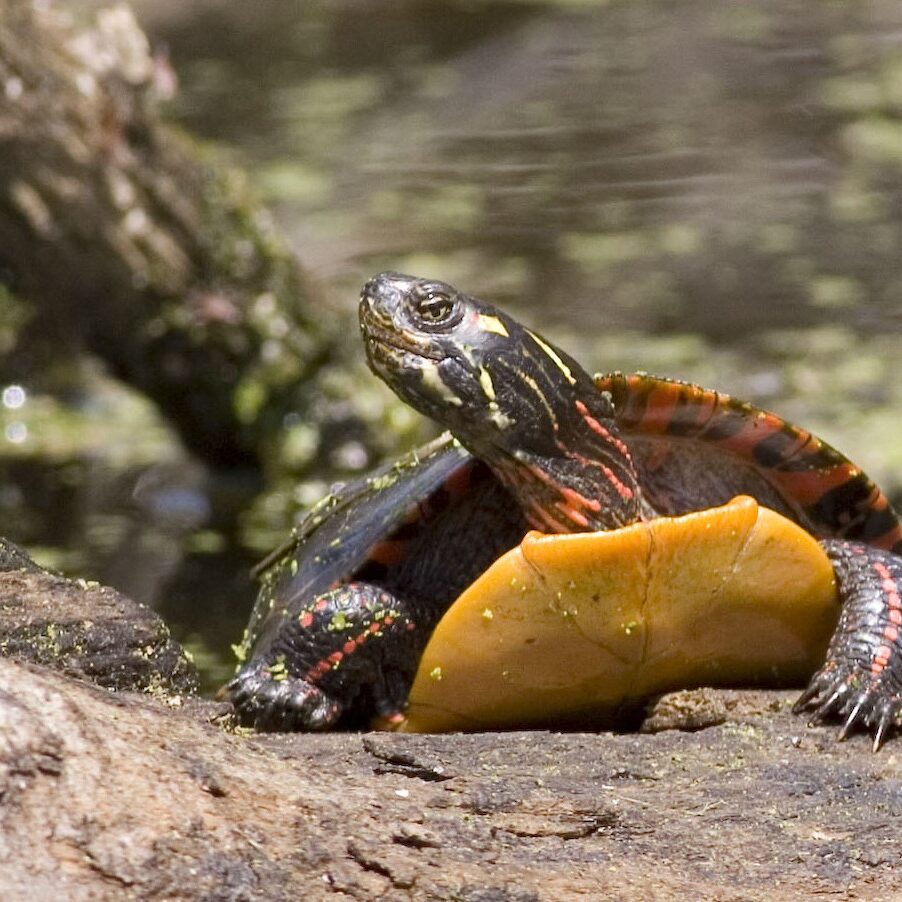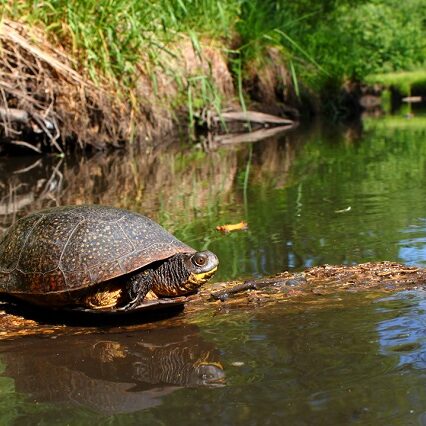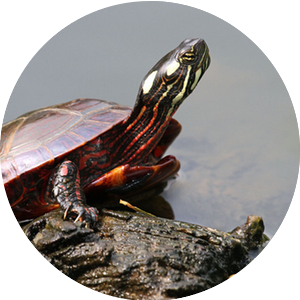explore
Reptiles

Water Relationships
As mentioned already, all reptiles need water to survive, but freshwater reptiles need more than desert reptiles since their food is reliant on water. Freshwater turtles also use deep water to brumate. Brumation is when reptiles’ systems shut down to preserve heat and energy in extreme cold temperatures. Freshwater turtles do not spend much time in lakes, and instead prefer to stick to marshes and streams where they can access dry land more easily.
Riverbank and Shoreline Relationships
These animals depend on the shoreline and riverbanks to lay their eggs. Turtles use land to rest, and enter the water to escape land predators, so they need access to intact shorelines and riverbanks to climb in and out of the water safely.


Plant Relationships
Though not all freshwater reptiles eat plants, some rely on plants as a big part of their diet. They can even eat invasive plants and in this way help prevent them from taking over certain areas of their ecosystem!
Relationships with Other Animals
Since these animals sit in the middle of the food web, their presence ensures there is enough food for their predators, but also ensures that populations of the animals they eat will stay in check. Making sure they are healthy is super important for the health of a freshwater ecosystem!


Weather Relationships
These animals depend on shallower waters like streams and marshes to move around easily, hunt, and brumate. If shallow waters are flooded, these animals may be forced to move. In more extreme cold weather, these animals enter brumation, where their systems slow down to conserve energy. They can't stay in this state forever, however - they will need temperatures to go back to normal so they can start eating again.